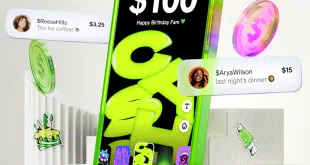Its ultimate significance may prove to be months away, but a new handset introduced last week by Nokia has some mobile-payments observers expressing hope that talk of mobile transactions at the point of sale may now be more realistic. “It is definitely something that will move the conversation along,” says Michael Friedman, who follows mobile payments as a senior analyst at Mercatus LLC, a Boston-based consulting firm. “It will start to tell the use case for NFC. Everything about NFC has been speculation.” The new phone, the Nokia 6216 classic, is the first mobile device to link an embedded near-field communication (NCF) chipset via circuitry to the phone's SIM card, the smart chip that identifies the phone to the mobile network. Working with the SIM, which will store card and other payment-account data, the phone will allow users to perform contactless payments by waving or tapping the phone on or near a POS reader. NFC works at very short ranges, typically 4 inches or less. The phone represents Nokia's third NFC-enabled device, though the previous models did not rely on the SIM card as the so-called secure element, the component in the phone that stores payment data and communicates with the NFC chip and antenna. Hampered by unresolved business issues and a scarcity of properly equipped handsets, NFC payments have stalled in the U.S. in recent months after a flurry of tests by Visa Inc. and MasterCard Inc. in major markets like Atlanta, Dallas, and New York. Also, a four-month test in Canada involving MasterCard, Citigroup Inc., and Bell Mobility recently ended. The technology is faring somewhat better overseas, with the first commercial service having been launched by Visa earlier this month in Malaysia. By harnessing the SIM, however, Nokia may crack open the market for NFC with a commercially available device that conforms to standards specified by the GSM Association, a worldwide mobile trade organization, and that eases the way for developers to write applications. “At this point, it's about getting devices on the market so developers can work on [them] using the SIM as the secure element,” says Nick Holland, a senior analyst specializing in mobile payments at the Boston-based Aite Group LLC. It remains unclear, however, where Nokia will market the new phone. A company spokesperson says by e-mail that the product will initially ship to markets in Europe and Asia, while “we have not yet announced U.S. availability.” Observers question whether the device, which is expected to ship in the third quarter at a price of about $195, will go on sale in the U.S. any time soon, given that Asian markets appear more promising for NFC. “I'd be very surprised if this were introduced in North America,” says Friedman. “There's just no market for it yet [here].” The development of NFC domestically has been ensnarled in disputes between mobile carriers and the card networks over transaction revenues, while at the same time not enough merchants have installed readers for contactless transactions to provide a widespread acceptance infrastructure. “I could see [the 6216] being a device for markets where there are more readers in the marketplace,” says Holland. Nor are mobile network operators in the U.S. likely any time soon to offer a phone containing a costly technology that customers can't use right away, Friedman argues. Holland estimates the NFC chipset raises the cost of a mobile device by about $10. Still, Holland points out that mobile operators have launched technology in the past, such as Bluetooth, without a proven use case. He argues the commercial availability of NFC phones with functionality based on the SIM, a component the mobile operators control, could present them with an opportunity to seize the initiative in payments. The excuse that there aren't enough devices on the market, he says, “is wearing a bit thin.”
Check Also
Despite Lower-Than-Expected Profit And Cash App Softness, Block Remains Bullish
Block Inc. remains bullish that its Cash App financial-services platform will remain a growth driver …





